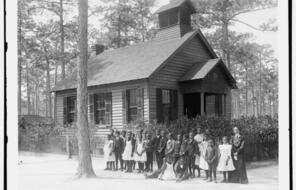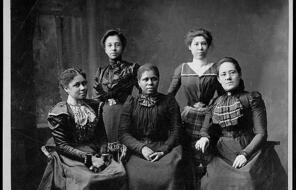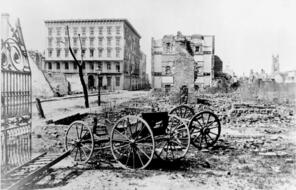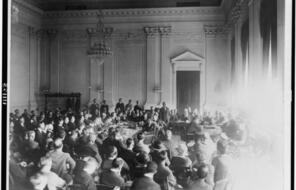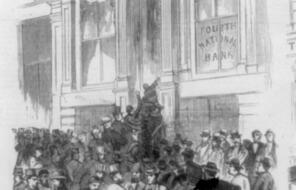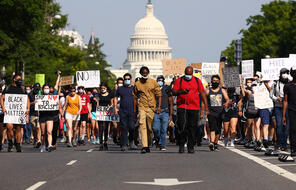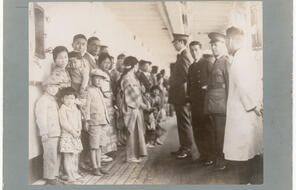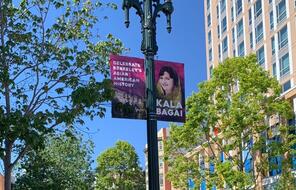Japanese American Military Service and Protest During WWII
Subject
- History
- Social Studies
Language
English — USUpdated
Get it in Google Drive!
Get everything you need including content from this page
Get it in Google Drive!
Get everything you need including content from this page
During World War II, about 33,000 Japanese Americans detained in incarceration camps either enlisted in the armed forces or were drafted into service. Ironically, they fought in segregated units to protect their country and its freedoms even as their own relatives and friends remained behind barbed wire fences guarded by armed American soldiers. Several thousand Americans of Japanese descent served in the Military Intelligence Service. They translated captured Japanese documents, including battle plans and secret codes. General Charles Willoughby, chief of intelligence in the Pacific, estimated that their military contributions shortened the war by two years.
Japanese Americans also fought in Europe and Asia. American soldiers of Japanese descent were among the troops who helped liberate Jewish prisoners from Dachau and other Nazi death camps. Hawaii’s 100th Battalion, a unit primarily made up of Japanese American soldiers, had so many members that were wounded or killed in battles in North Africa and Italy that it was known as the “Purple Heart Battalion." Japanese Americans from the West Coast fought primarily in France as part of the 442nd Regiment—one of the most decorated units in American military history. Its members earned 18,143 individual decorations, including a Congressional Medal of Honor, 47 Distinguished Service Crosses, 350 Silver Stars, and more than 3,600 Purple Hearts. When President Harry S. Truman welcomed the regiment home after the war, he told members, “You fought not only the enemy, you fought prejudice—and you won.” 1
Not all Japanese Americans felt that they should serve in the military while their families and communities were incarcerated by the US government, however. In 1943, the US government required Japanese Americans to answer a “loyalty questionnaire” as a precondition for leaving the camps and to determine their eligibility for the US military. In protest, some Japanese Americans responded “no” to both questions 27 and 28 on the US government’s loyalty questionnaire. These questions asked respondents if they were willing to participate in the US military and whether they would renounce any allegiance to the Japanese emperor and pledge “unqualified” allegiance to the United States.
As the Densho Encyclopedia notes, however, their answers were often more complicated than a simple “no”:
Though stigmatized as ‘disloyal,’ the no-noes had a wide variety of reasons for their actions. No-no status was stigmatized after the war, and many have remained reluctant to tell their stories. . . . Though the vast majority eventually answered the key loyalty questions affirmatively, a significant minority either refused to answer, gave qualified answers, or answered negatively—about 12,000 out of the 78,000 people over the age of seventeen whom the questionnaire was distributed to. People who answered in any of these manners were considered ‘disloyal’. . . .
The US government segregated this group from the rest of the internees and relocated them to Tule Lake, California, where they experienced harsh living conditions and remained until the end of the war.
Protests against drafting Japanese Americans into the military were not only among the so-called “No-Nos.” In just one example of many protests against the military draft, a group of women from the Minidoka incarceration camp banded together in February 1944 to petition the government against drafting their American-born sons.
Calling themselves the Mothers’ Society of Minidoka, their petition read, in part:
“[We] were forced to lead a life within barbed-wire fences. . . . We understand that the purpose for which the United States is allowing tremendous sacrifices in fighting the war today is to establish ‘freedom and equality’ throughout the world. When they [their sons] . . . consider the purpose of this war and then think about the treatment they are receiving at present, they discover the existence of a great paradox. . . . To think of sending them in this condition to the front, we, as mothers, considering the past and the future, feel an extreme and unbearable anguish. . . . In this connection we would like to have you please consider the suspension of the drafting of citizens of Japanese ancestry until they regain the confidence that they can demonstrate their loyalty to the United States from the bottom of their hearts as formerly.” (Mothers’ Society of Minidoka, Minidoka incarceration camp, 1944)
Some Japanese Americans outright refused to be drafted and were arrested and tried. In the largest mass trial for draft resistance in US history, 85 inmates at Heart Mountain incarceration camp were tried and convicted of violating the Selective Service Act. Their sentences were between two and five years.
Connection Questions
- Why do many historians view the performance of Japanese American soldiers as ironic?
- Who were the so-called “No-Nos”? How were they treated by the US government?
- What argument did the Mothers’ Society of Minidoka give for calling for an end to the military draft of Japanese Americans? Why do you think some Japanese Americans risked arrest to protest the military draft?
- How does this reading connect, extend, or challenge your understanding of what it means to pursue freedom and democracy in the United States?
Teach a Facing History lesson featuring this resource.
- 1“442nd Regimental Combat Team,” Densho Encyclopedia.
How to Cite This Reading
Facing History & Ourselves, “Japanese American Military Service and Protest During WWII”, last updated September 12, 2024.

